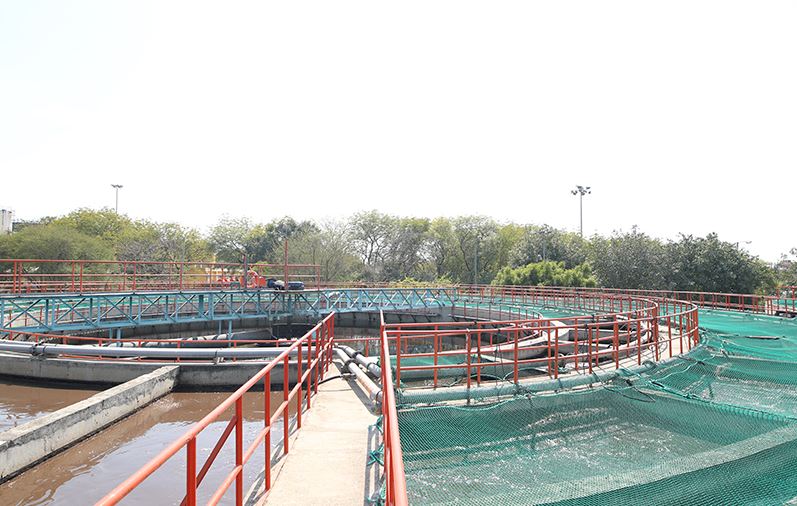
In an era where sustainable practices are no longer optional but imperative, the rise of Zero Liquid Discharge (ZLD) systems in airport wastewater management marks a significant evolution in how we approach environmental stewardship. Airports produce vast amounts of wastewater from various sources, including passenger services, maintenance operations and food preparation. Traditional wastewater management methods, often reliant on discharging treated water into surrounding environments, can lead to pollution and resource depletion. In contrast, ZLD systems present a transformative solution that not only addresses these concerns but also embodies the principles of circular economy and sustainable development.
At its core, Zero Liquid Discharge refers to a wastewater management approach that aims to eliminate the discharge of liquid waste, ensuring that all water is either reused or converted into solid byproducts. This system involves a series of treatment processes that include pretreatment, evaporation and crystallization, effectively recovering water for reuse while minimizing environmental impact. By implementing ZLD technologies, airports can significantly reduce their freshwater consumption, lower their operational costs and enhance their reputation as environmentally responsible entities.
The aviation sector is increasingly scrutinized for its environmental footprint, particularly in water usage and wastewater management. Airports are faced with mounting pressure from regulatory bodies and the public to adopt sustainable practices. Here are several reasons why ZLD systems are becoming crucial in airport wastewater management:
As global populations grow and climate change exacerbates water scarcity, airports must find innovative ways to manage their water resources. ZLD systems not only conserve freshwater but also ensure that treated wastewater is reused within airport operations, such as irrigation, cooling systems and cleaning processes. This closed-loop system is essential for sustainable water management in an era of dwindling resources.
Stricter environmental regulations worldwide are compelling airports to rethink their wastewater management strategies. ZLD systems provide a proactive approach to compliance, minimizing the risk of penalties and enabling airports to meet or exceed regulatory standards. By eliminating liquid waste discharge, airports can position themselves as leaders in sustainability.
The impact of traditional wastewater treatment methods can be significant, contributing to pollution of local water bodies and disrupting ecosystems. ZLD systems mitigate these risks by preventing any contaminants from entering the environment. This commitment to reducing pollution aligns with the growing global focus on preserving natural resources and protecting biodiversity.
While the initial investment in ZLD technology may be substantial, the long-term economic benefits are substantial. By reducing freshwater consumption and lowering wastewater treatment costs, airports can achieve significant savings. Moreover, the potential for resource recovery, such as valuable minerals and salts from wastewater, presents additional economic opportunities.
Airports that adopt ZLD systems demonstrate their commitment to sustainability, enhancing their public image and attracting environmentally conscious travelers and businesses. In an industry where reputation is crucial, showcasing efforts to minimize environmental impact can lead to increased patronage and partnerships.
Despite the numerous advantages, the implementation of ZLD systems is not without its challenges. Technical complexities, high initial capital costs and the need for specialized knowledge and training can hinder adoption. Furthermore, integrating ZLD into existing infrastructure may require significant modifications, necessitating careful planning and execution. However, as technology continues to advance and awareness of sustainability issues grows, the barriers to implementing ZLD systems are steadily decreasing.
The future of airport wastewater management lies in innovative solutions that embrace sustainability and efficiency. Zero Liquid Discharge systems represent a forward-thinking approach that not only addresses current environmental challenges but also sets the stage for a more sustainable future in aviation. As airports continue to evolve and adapt to the pressing demands of environmental responsibility, the integration of ZLD systems will be pivotal in reshaping their water management strategies.
In conclusion, as we look towards a more sustainable future, the rise of Zero Liquid Discharge systems in airport wastewater management stands as a testament to the aviation industry's commitment to environmental stewardship. The future of wastewater management relies on innovative, sustainable and AI driven solutions. Technologies like IoT sensors, predictive analytics and automated treatment processes optimize efficiency, reduce energy consumption and ensure environmentally responsible water reuse.
If you need any services, drop us a mail at Rohitkumar.Singh@gmrgroup.in or get in touch with us at +919717199753.